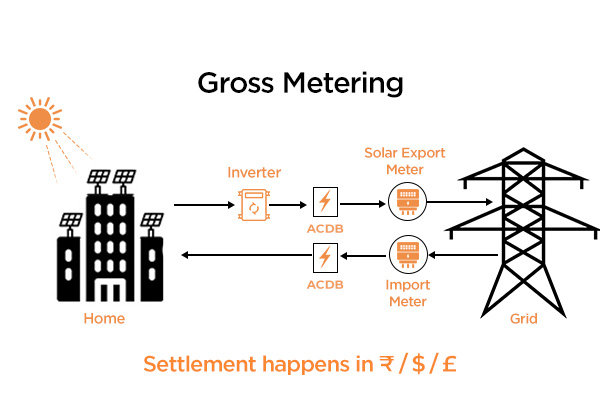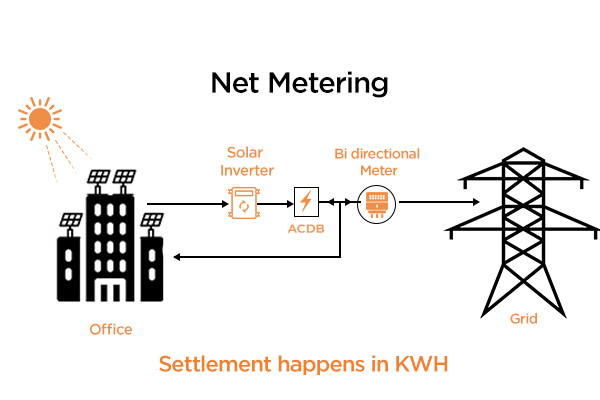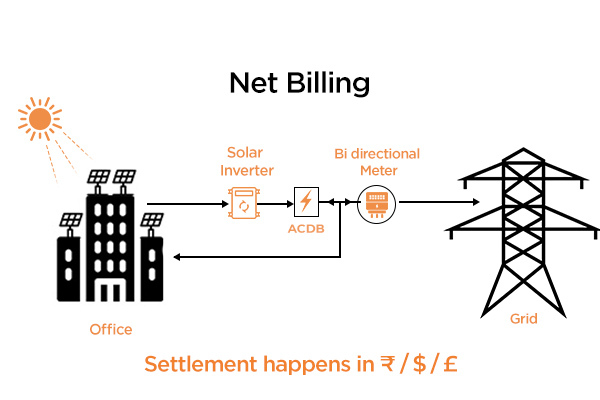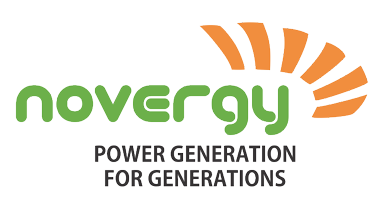The use of solar rooftop panels to generate electricity has slowly been gaining favour in the country since the cost of solar panels has decreased dramatically. Rooftop solar systems come with a plethora of benefits.
Because storing electricity is costly, solar plants are frequently connected to the grid, allowing the surplus to be used to sustain the system. When you use energy in a commercial space, a metering device determines how much you’ve used and generates a bill based on that information.
On-grid solar customers that have their rooftop systems connected to the grid are in the same scenario. It can be metered in two different ways: net metering and gross metering.
Gross Metering
A consumer is compensated at a fixed feed-in-tariff for the total units of solar energy generated and exported to the grid (as measured by a unidirectional “gross meter”), you must pay the retail supply tariff to the power distribution company (discom) for the power consumed from the grid. Tariffs for feed-in and retail supply are rarely the same.
The total solar generation is measured by the bi-directional meter, while the total power import is measured by the unidirectional meter.
Net Metering
Net metering is a system in which power exports are offset by imports, decreasing the electricity bill by deducting electricity generated from total electricity consumed over a set period of time. The adjustments might be made on a monthly, half-yearly, or annual basis.
A bidirectional ‘net meter’ typically accounts for both power import and export. If the exported electricity is greater than the imported electricity, the surplus electricity supplied into the grid may or may not be paid depending on the state’s net metering rules.
There will be only one bill generated, which will include a total import and total export energy measure. The difference between the two is taken into account, and payment is based on the net amount of imports or exports.
Net Billing
Consumers can be paid for net access electricity that is generated and exported to the grid under net metering laws. Net billing is a different way of doing things. End users can utilize net billing to offset retail electricity purchases, similar to net metering.

Major difference between net billing and net metering is that different rates are used to value the excess of energy given to distribution companies and energy received under net billing. This means that companies will be able to supply the power generated by rooftops to grip at much lower prices but sell the same at higher costs. This will give distribution companies a higher advantage over the consumers.
The minimum solar energy required for consumers under net billing is 1 KW. This following table shows the way solar energy is settled.

Financial Benefit and Billing
Consumers can choose one of the metering options, but they cannot switch to the other afterwards, according to the new standards. As a result, the financials play a critical part in metering selection.
In gross metering, because 100% of the energy generated is exported and the PPA is for 25 years, the solar returns are guaranteed for 25 years. Year after year, the normal electricity bill has seen a 5 to 7% increase in costs.
While in net metering, the solar system’s return is determined by the amount of money saved on the electricity bill as a result of its installation. As the cost of power rises year after year, so do the savings from solar.
One can also refer to the latest govt notification on Electricity rights.
One can also refer the official website for more notifications cercind.gov.in
Making The Right Decision
Rooftop solar systems are becoming more popular as customers become more aware of new business models and the availability of new business concepts. While many distribution firms are hesitant to allow rooftop installations because of the possible income loss, few have recommended switching from net to gross metering.
This is because customer remuneration is often lower under the gross metering system than the retail supply rate at which they buy electricity from discoms.
Since the import of power is offset by the export in net metering, the compensation is effectively at the retail supply tariff. As a result, they are more likely to use gross metering rather than net metering as a revenue protection measure.
There may be exceptions, therefore consumers should weigh the benefits and drawbacks before deciding whether to use net or gross metering for their solar rooftop system if discom provides the option.
Conclusion
To give a better idea, net metering is usually most suitable for all types of customers. If net metering is not available, then the next best option is Net billing. Gross billing is the least attractive for most consumers as usually the government will buy at a lower rate (Eg. Rs 3 / KWh of solar energy) and consumers will have to purchase at a very high rate of around Rs. 8 to 12 per KW.
If you’re looking for one for yourself, Novergy offers Very High Efficiency Crystalline Silicon solar panels that are manufactured with the finest quality raw materials and adhere to strict manufacturing guidelines.
Their Half-cut Solar panels continuously supply more kWh energy (up to 60% or more) for a longer period of time with much less deterioration. These solar panels have a cell efficiency of better than 21%. These solar panels come in a variety of wattages, up to 350 watts, and cell layouts, including 72 cells, 60 cells, and 36 cells.
Novergy could be your ideal EPC partner, with over 14+ years of experience and a track record of successful installations. It can help you get the most out of your solar panels by having them properly installed, maintained, and monitored. These solar panels are covered by a 25-year linear guarantee, providing more consistent performance and giving the consumer complete peace of mind.

